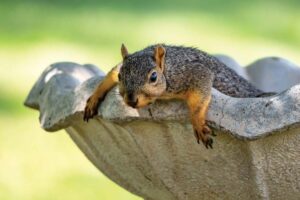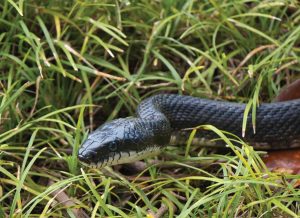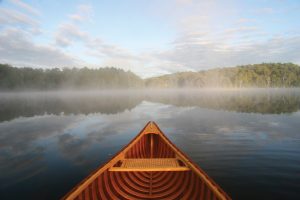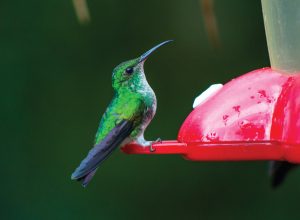“That about covers it. So, let me ask you this. How many of you are feeling overwhelmed?” I raised my hand. Oops! Not another hand was in the air.
I was standing next to my husband, the one woman at a well-attended forestry workshop on a December day in the middle of a bottomland field which had been converted from raising row-crops to growing trees about 15 years prior. Beautiful young burr oaks and other Quercus species of 3- to 5-inch diameter were plentiful, but so were cottonwood, sycamore, ash, hackberry, autumn olive, etc. The stand of trees was dog-hair thick – the perfect place for talking about thinning!
And, let me tell you, I know about thinning. Thinning as in my husband’s hair? Oh, I would never make such a crack – not me. I’m talking about thinning in terms of the removal of trees detrimental to the growth of valuable trees. I have been working at that task for several years now, my family owning and managing nearly 400 acres of woodlands.
I think of valuable trees as those that provide food and shelter for wildlife or just simply make me want to hug them.
Yes, I like trees, but there are certain woody species I perceive as undesirable, two of which are bush honeysuckle and autumn olive. These two non-native woody species grow rapidly and spread expansively. By foliating or leafing-out early, they cast shade upon the forest floor, thereby preventing woodland wildflowers and saplings from gathering sunlight at the most opportune moment – springtime. If left unchecked, these highly invasive species dominate and create a monoculture. A healthy forest is a place of diversity where sunlight dapples, bluebells blossom, squirrels scamper, box turtles mosey, bobcats pad, wild turkeys roost and orioles nest.
Another nemesis of mine is the fast-growing, ever-encroaching honey locust; its sole purpose is to puncture my precious skin with its 2-inch needle-sharp thorns.
Prior to the workshop, on a lovely autumn day, I had set out to work on my own bottomland tree planting. Strapped around my waist was Excalibur in its scabbard. I see thriving young trees (oaks, pecans, ash and walnuts). Yet, I’m not about to let my guard down.
Sure enough, eight feet to my right stands a huge multi-stemmed, thorn-laden shrub–autumn olive. Low leaning branches radiate from its several central trunks. I approach, drop and crawl under. I remove my blade from its scabbard and begin sawing, putting the most muscle into the pulling of my thin and narrow 14-inch saw. Back and forth the saw goes, making slow progress through thick trunks. Forty minutes later, I crawl out from under the jumble of severed limbs, grab my herbicide sprayer, coat the stumps, reach back to retrieve my impaled hat, receive yet another scratch and utter a rather unladylike word. Then I wipe the sweat from my brow using the sleeve of my coveralls, walk about 20 feet and spy another.
Please consider the huge amount of effort I just described, and the constant march of ever-emerging undesirables. Surely, you can see that my admission in front of all those men was not one of wimpiness!
Did you just say, “Duh, use a chainsaw!” Truth be told, I have difficulty pull-starting a chainsaw. Lugging those heavy gas-powered saws is a chore. They emit fumes, and they’re loud.
Sometime after that workshop, there was a battery-powered chainsaw under the Christmas tree, a gift to me from my sweet, perceptive husband. Last weekend, outfitted in chaps, helmet, shield and gloves, I was taught chainsaw safety. “This saw looks small and toy-like, but it is as dangerous as my chainsaw,” my husband said. “Always remember to set the chain brake between cuts.”
Remembering advice from the workshop about considering one’s own goal for the forest when thinning, we discussed which trees to fell. My husband said, “This one is crowding the oak and over-topping it, which will delay the oak’s acorn production. Let’s cut this locust.”
I said, “Oh, yeah, let me do it!” Discerning an appropriate fall zone, I began the cut. Zing. Crash.
Now I raise my hand, but I’m holding the battery-powered chainsaw.







